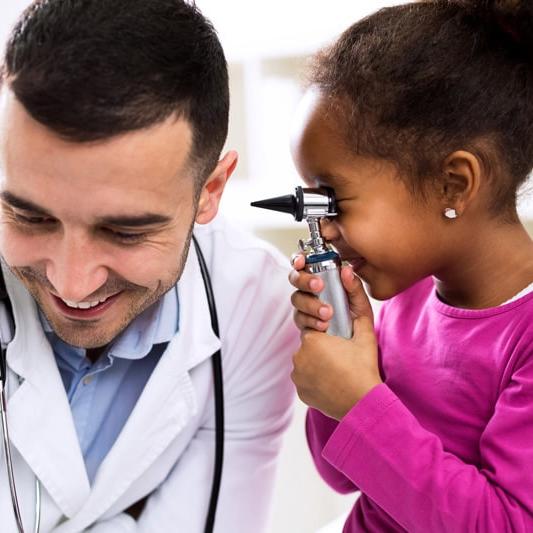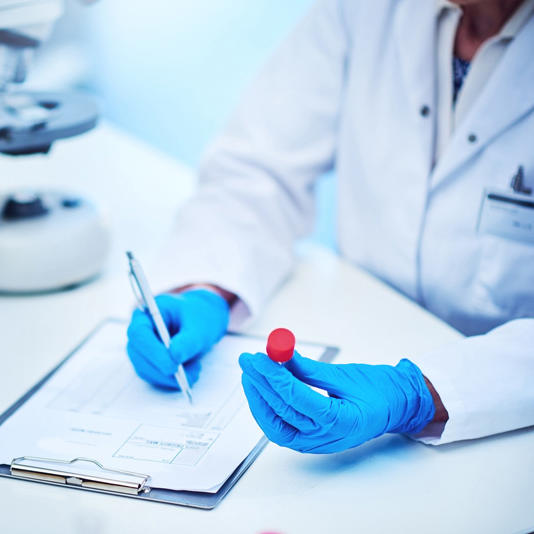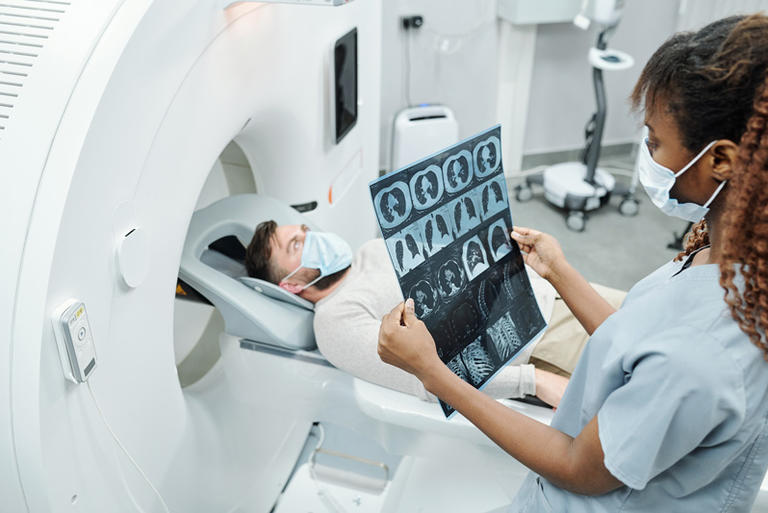What Is Pathology?
If you are curious about the causes and nature of diseases, then you may consider a career as a pathologist. So what is pathology? Simply defined, pathology is the study of disease, and it requires an extensive and detailed knowledge of medicine. Pathology links science and medicine, and it underpins every aspect of patient care, from diagnostic testing and treatment to using new technologies and preventing disease.
Is a Pathologist a Doctor?
A pathologist is a physician who specializes in pathology. Pathologists are experts in the diagnosis, prognosis, and treatment of disorders of body tissues and fluids. Pathologists must have a medical degree — a Doctor of Medicine (MD) or Doctor of Osteopathic Medicine (DO) — before they complete a pathology residency. To learn more about the differences between these medical degrees, see MD vs. DO: What’s the Difference?
Wondering where you stand as a medical school candidate?
What Does a Pathologist Do?
A pathologist uses a variety of means — including microscopic examination and laboratory tests — to diagnose and monitor diseases. Pathologists can see the history as well as the probable trajectory of a disease. If a cell or other structure is altered in a certain way, the patient will have certain symptoms, now or in the future.
A pathologist may study such health issues as anemia, cancer, or tuberculosis, or may be called upon to determine the cause of a patient’s death. Sometimes considered a “doctor’s doctor,” a pathologist is often a second line of clinical care and may help a patient’s primary physician make or confirm a diagnosis. Pathologists use a wide variety of examinations, procedures, and tests. These may include:
- Autopsies
- Biopsies
- Blood investigations and blood sugar tests
- Fine needle aspirations
- Pap smears
Pathologists have long been involved in research to advance medicine and devise new treatments to fight diseases, infections, and viruses. They have played key roles in the development of vaccines and the treatment of inherited conditions, as well as in the advances of blood transfusion and other processes. Pathologists are also active in academic circles and participate in conferences and publications dedicated to advancing medical knowledge and therapeutic options.
What Are the Different Kinds of Pathologists?
Pathology is divided into two broad categories: anatomic and clinical. Anatomic pathologists study diseases through the chemical, gross, immunologic, microscopic, and molecular examination of organs, tissues, and whole bodies. This may occasionally include seeing patients in person, but anatomic pathologists mostly work behind the scenes, examining samples and performing tests. Subspecialties in anatomic pathology include:
- Breast pathology
- Cytopathology
- Dermatopathology
- Forensic pathology
- Gastrointestinal pathology
- Genitourinary pathology
- Gynecologic pathology
- Hematopathology
- Neuropathology
- Pediatric pathology
- Pulmonary pathology
Clinical pathologists study diseases through the laboratory analysis of bodily fluids and tissues. They may analyze hundreds of samples per day, looking for indicators of such maladies as heart disease, liver malfunction, or tumors. Clinical pathologists may also work directly with patients suffering from metabolic disorders. Clinical pathology includes:
- Blood banking and transfusion medicine
- Clinical chemistry (including toxicology)
- Hematology
- Microbiology (including immunology)
For a full list of pathology specialties and subspecialties, check out the AAMC’s breakdown here.
How to Become a Doctor of Pathology
To become a pathologist, you must first become a physician by graduating from an accredited medical school — such as Ross University School of Medicine (Ross Med). The steps to a medical degree at Ross Med, which is located on the Caribbean island of Barbados, are the same as at U.S.-based schools: two years of medical science classes and two years of hands-on clinical training. For Ross Med students, the medical sciences curriculum is completed at the Barbados campus; the clinical training can be completed at affiliated teaching hospitals in the United States.
During clinical training, Ross Med students complete core rotations in internal medicine, surgery, pediatrics, family medicine, obstetrics/gynecology, and psychiatry. It is then up to each student to select elective rotations to fulfill their clinical requirements. Students can round out their education of remaining clinical requirements in any of 40 specialty elective areas (including pathology).
During the fourth and final year of medical school, students prepare for the next step in their medical education: residency. At Ross Med, the Office of Career Advisement (OCA) helps students determine which residency specialty — such as pathology — suits them best. The OCA then helps students navigate the National Resident Matching Program®(NRMP®) — a placement system that medical students who want to obtain licensure in the United States use to “match” with a medical residency. Residencies are required to become a licensed physician, and they last from three to eight years. Individual anatomic or clinical pathology residencies are usually three years, while an extra year is added for a combined anatomic and clinical pathology residency.
In 2022-2023, Ross Med graduates had a first-time residency attainment rate of 98%. In recent years, Ross Med MDs have matched with pathology residencies at such hospitals as Brown University/Rhode Island Hospital ; Staten Island University Hospital in New York; University of California, Irvine, Medical Center; and the University of Illinois Hospital in Chicago.
After the successful completion of pathology training, a doctor is eligible to become certified by the American Board of Pathology. Many board-certified pathologists are members of the College of American Pathologists or the American Society for Clinical Pathology. Doctors who want to subspecialize in a specific area of pathology must pursue additional training.
Meet a Pathologist
Emma Henrie, MD, a 2017 Ross Med graduate, is an assistant medical examiner at the Harris County Institute of Forensic Science in Texas. We asked Dr. Henrie to describe the role of a pathologist.
Q: Why did you decide to go into your specialty?
A: I’ve wanted to be a forensic pathologist ever since dissecting my first frog in seventh grade science. Once I got to medical school, I became even more fascinated with the human body, but I found myself gravitating toward processes that make everything stop, like disease, drugs, and injuries. Residency has been a similar story. Though I enjoy making tissue and laboratory diagnoses in the living, I am drawn to the morgue and its stories.
Q: Any advice to medical students considering the specialty?
A: Take at least one pathology elective. If you have a choice between all the different services pathology has to offer but you can only choose one, take forensic pathology. You will learn several important things:
- Learn how to fill out a death certificate.
- See how common diseases (i.e. pneumonia, cirrhosis) appear with your own eyes.
- Perform the ultimate physical examination.
- Experience crime scene investigation and how law enforcement works with medicine in real time.
- Attend court and witness how important confidence and competence can be in the judicial system.
I stress forensic pathology because even if you decide to take a different path in medicine, many of the things you learn during the rotation will affect your practice for the entirety of your career. Regardless of which specialty you ultimately choose, you will utilize pathology and/or the laboratory at some point. Without this branch, medicine as we know it would cease to exist.
During third-year clerkships, find ways to meet pathologists. Surgery clerkship is often the most helpful in this regard — any time there's a "frozen," ask to go with it to pathology. If a patient has surgery for cancer or some other type of lesion, follow the case to pathology a day or two after surgery. You'll want letters of recommendation from the pathologists. As a whole, the specialty wants to see students who are truly interested in the field.
Additionally, communication is extremely important as a pathologist. Even though we don't often give patients the news directly, we are often behind the scenes talking with the physician who will deliver the news. You can demonstrate your communication skills in your application by having a well-written and interesting personal statement.
Don’t stress about learning as much "pathology" as you can before residency. Knowing your clinical skills comes into play more often than you might expect, and medical school will be the last opportunity you have to practice interviewing and physical exam skills (pathology does not have an intern or transitional year). Pathology programs know that no medical school prepares anyone for pathology residency, and pathology faculty know that it's pretty near ground zero for learning histology well enough to make a diagnosis. Electives during fourth year should be interesting to you. Don't stress about doing a ton of audition rotations.
Q: What’s the most rewarding part of your job?
A: The most rewarding part of my job is the closure it provides my patients and their families. Speaking specifically to my intended specialty, I look forward to providing answers to difficult questions so that families can begin to heal after their loved one has passed. However, even in the broader view of making diagnoses based on tissue, knowing the patient has been worried about this new “mass” — and knowing that whatever answer I provide them will help them plan the next steps — gives me great personal satisfaction. Another major perk of this field is the flexibility of my days, which provides a healthy work-life balance.
If you want to become a doctor, and a career in pathology appeals to you, learn more about the Ross Med MD Program and investigate the Office of Career Advisement. When you’re ready, take the next step on your path to a specialization in pathology: Apply for admission to Ross University School of Medicine.
A Career in Pathology
Many are curious to know, what does a pathologist do? Where do pathologists work? And what’s a pathologist’s normal routine like? Pathologists may work in a clinic, hospital, or medical office, and some have their own private practice. Others work in university medical schools or research facilities, in independent diagnostic laboratories, or as coroners or medical examiners.
A pathologist’s time is spent caring for outpatients, doing laboratory work, performing procedures and tests, discussing cases with other doctors, and visiting hospital wards. Meetings and administration tasks absorb a lot of time, and hours are also spent consulting with other specialists, doing research, studying, and teaching. Most pathologists work a typical 40-hour week, and some are also on-call — available for consultation at night or on days off.
Because pathologists diagnose and study a wide spectrum of illnesses and conditions, they can have a great impact on the lives of individual patients as well as overall community health.
Demand for Pathologists
The demand for pathologists is as certain as the occurrence of disease and death among the world’s population. In other words, pathologists will always be needed. And that demand grows as the world population ages — diseases disproportionately affect older people. Pathologists, too — like doctors in all medical fields — are an aging population, and as those doctors retire, the United States will see an increasing shortage of pathology specialists.
Related Blogs
*First time residency attainment rate is the percentage of students attaining a 2023–24 residency position out of all graduates or expected graduates in 2022–23 who were active applicants in the 2023 NRMP match or who attained a residency position outside the NRMP match.




